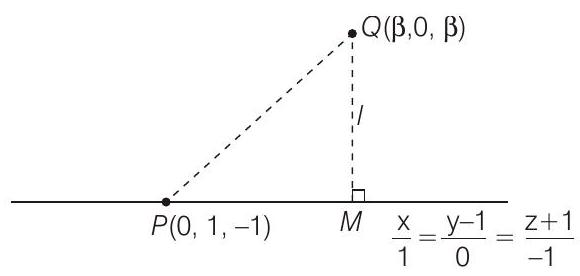Vectors 2 Question 3
3. If the length of the perpendicular from the point
(2019 Main, 10 April +I)
(a) 2
(b) -2
(c) -1
(d) 1
Show Answer
Answer:
Correct Answer: 3. (c)
Solution:
- Equation of given line is
Now, one of the point on line is

From the figure, the length of the perpendicular
and
Now,
From Eqs. (ii) and (iii), we get






